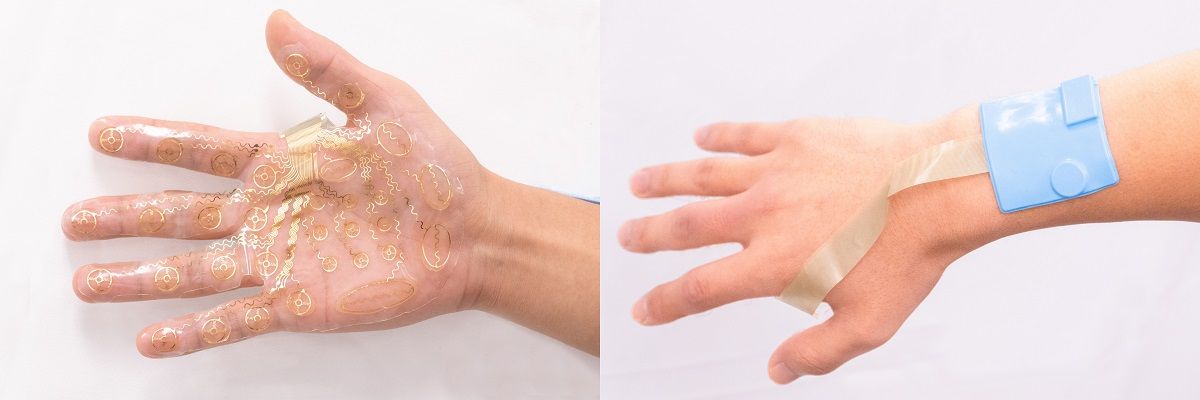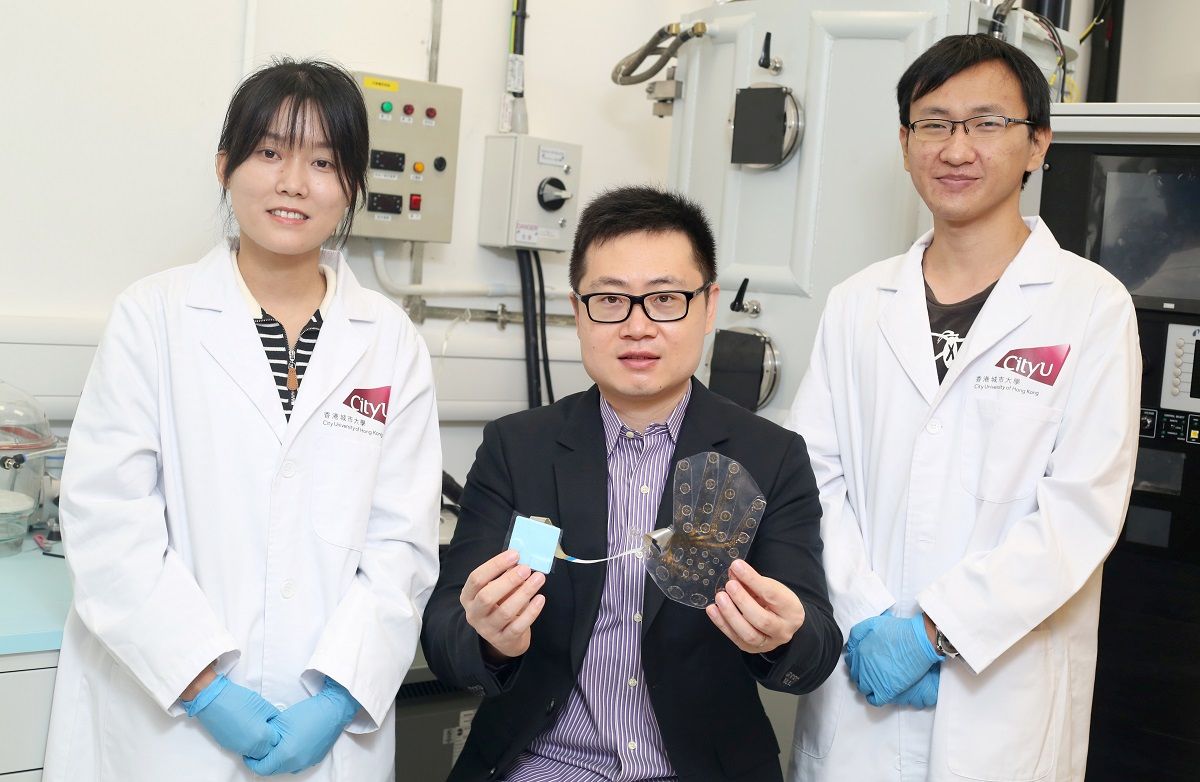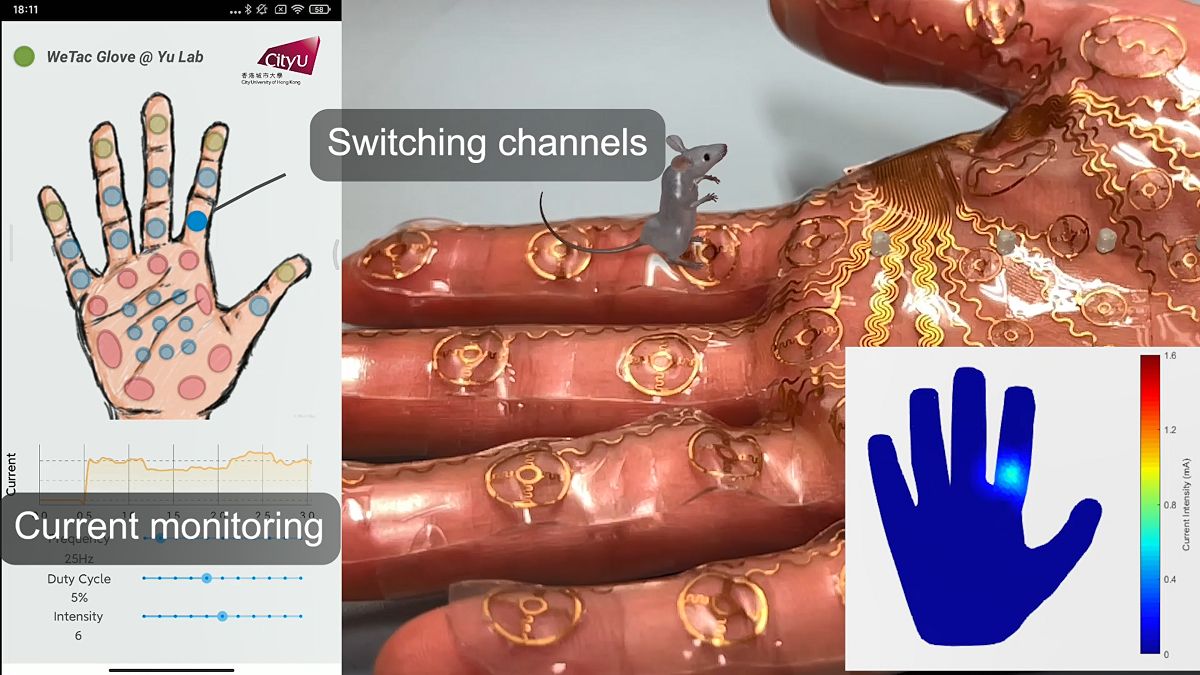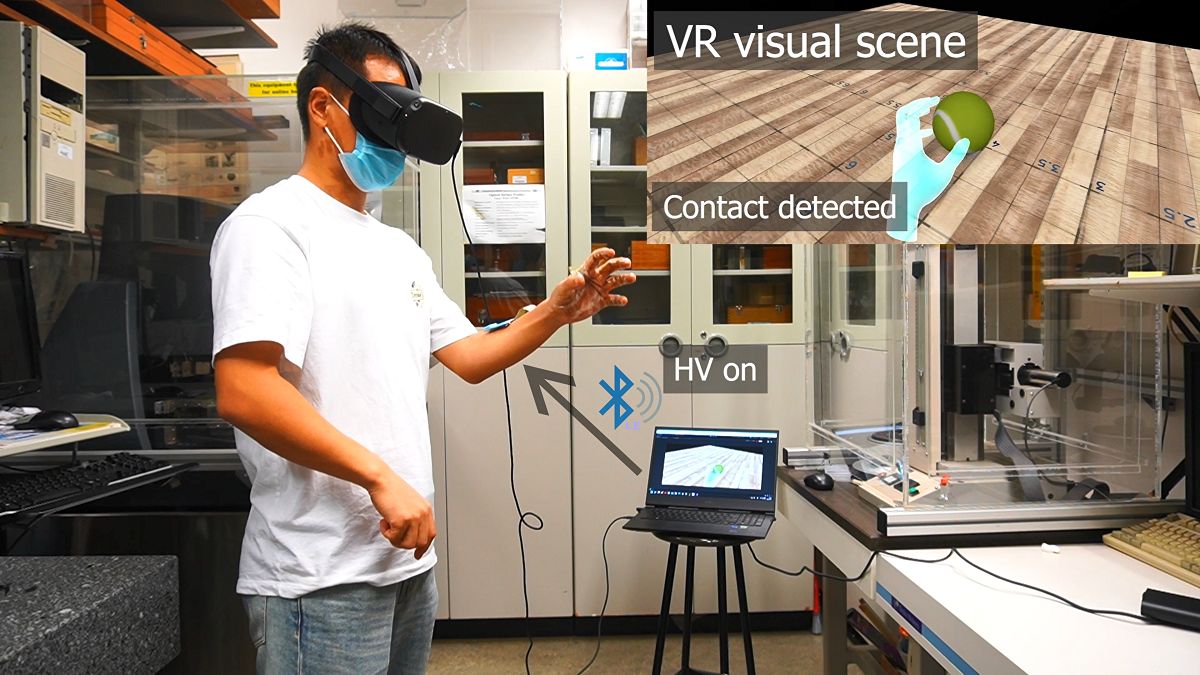[ad_1]
A team of City University of Hong Kong (CityU) has developed a wireless haptic interface call WeTac which improves the virtual experience by giving users the sensation of touch personalized. The concept itself is not new, but the solution developed by the researchers focuses on ease of use thanks to a small footprint.

“Haptic feedback has great potential, along with visual and auditory information, in virtual reality (VR), so we kept trying to make the interface thinner, softer, more compact and wireless so it could be used freely on the hand, like a second skinsaid Dr. Yu Xinge, an associate professor in CityU’s Department of Biomedical Engineering (BME). The study was published in Nature Machine Intelligence.

According to the researchers, existing tactile gloves rely primarily on bulky pumps and air ducts, powered and controlled via a series of cables: certainly not an ideal solution. WeTac presents itself as a more advanced solution, not only wireless, but also soft, thin and electro-tactile.

The system consists of two parts: a control unit affixed to the forearm e a hydrogel patch with electrodes to represent the tactile interface itself. The control unit weighs only 19.2 grams, is small in size (5cm x 5cm x 2.1mm) and is equipped with a rechargeable Li-ion battery. To “communicate” with other devices, use Bluetooth Low Energy (BLE).
The patch on the hand is between 220m and 1mm thick, and has electrodes on the palm. According to the researchers very flexible and ensures effective feedback in various positions and gestures.

“Electrotactile stimulation is a good way to impart the sensation of touch to users in virtual worlds,” explained Dr. Yu. “However, as individuals have different sensitivities, the same feedback strength might be felt differently by the hands of different users. So we need to tailor the feedback parameters accordingly to provide a universal tool for all users and eliminate another important bottleneck in current haptic technology”.
The patch has 32 electrotactile stimulation points on the palm, 13mm apart each, rather than just on the fingertips. In addition, solutions have been provided to avoid shocks that are too strong or weak. Finally, the temperature of the device is maintained in a range between 27 and 35.5C to avoid causing thermal discomfort during use.
With WeTac, it is possible to feel virtual objects in different scenarios, such as “grabbing a tennis ball during a sports training, touching a cactus or feeling a mouse running on the hand during social activities, virtual games and more,” say the researchers pointing out the potential application in the gaming field and in the remote control of robotic devices, such as arms.
.
[ad_2]
Source link
